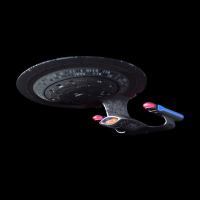I’ve often wondered how with the advanced medical science of the Federation how they can, for instance, revive practically dead people, but not create a communication device for Pike (or any of a number of people in the background of Lower Decks) more advanced than a blinking light.
One theory I had recently is that somehow, Pike (and people with similar conditions) received most of the brain damage in Broca’s Area, leaving them able to understand speach through Wernicke’s Area but unable to produce speech. The chair thus might be a replacement for Broca’s Area, but primitive in comparison to the original, biological one. (And further, perhaps the Talosians are able to simulate a human Broca’s Area when Pike is left in the illusion on Talos.)
Irreparable brain damage is something the Federation remains uncomfortable trying to “fix” with advanced tech well into the TNG era, as shown by Bareil’s situation in DS9 Life Support.
Knowing nothing of brain science, I’d extend your theory to posit that Pike also lacks the brain function to do any fine motor controls of his body: he can conceptualize simple things like “go to a place,” but cannot handle anything more precise. As such, the chair and beeper allows him essentially the same freedom of movement and expression that his damaged brain could have got out of a more “conventional” set of cybernetic replacements.
Pikes chair still sticks out as a classic example of old Star Trek having moments of not-so-prescience, but viewing it as a solution to a damaged brain more than a damaged body definitely helps make it less absurd.
Good theory - it’s been a long time since I studied brain anatomy, but hyper-specific brain damage might be the only way to truly address Pike’s situation as depicted in “The Menagerie”.



